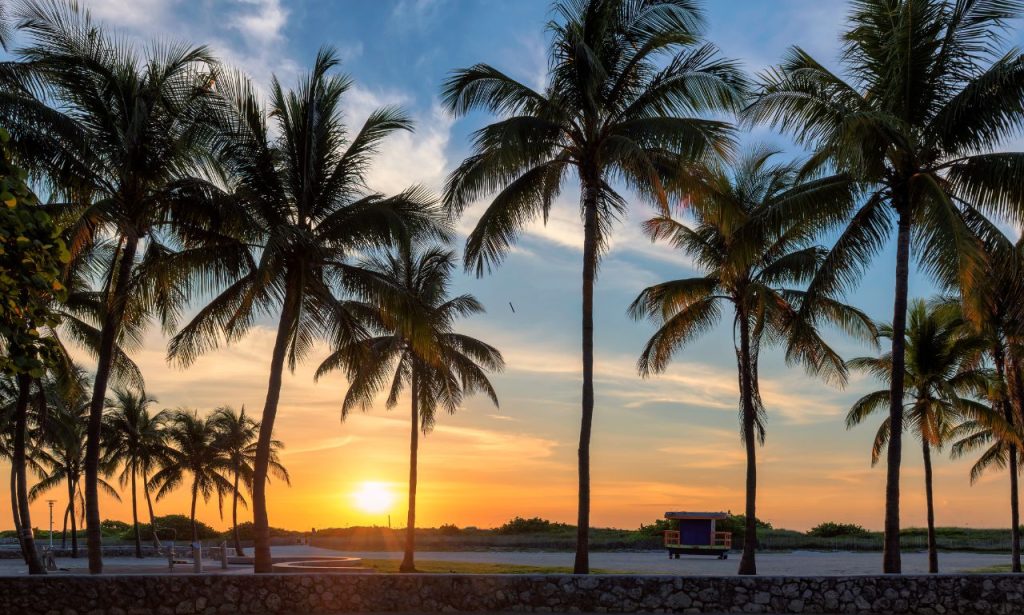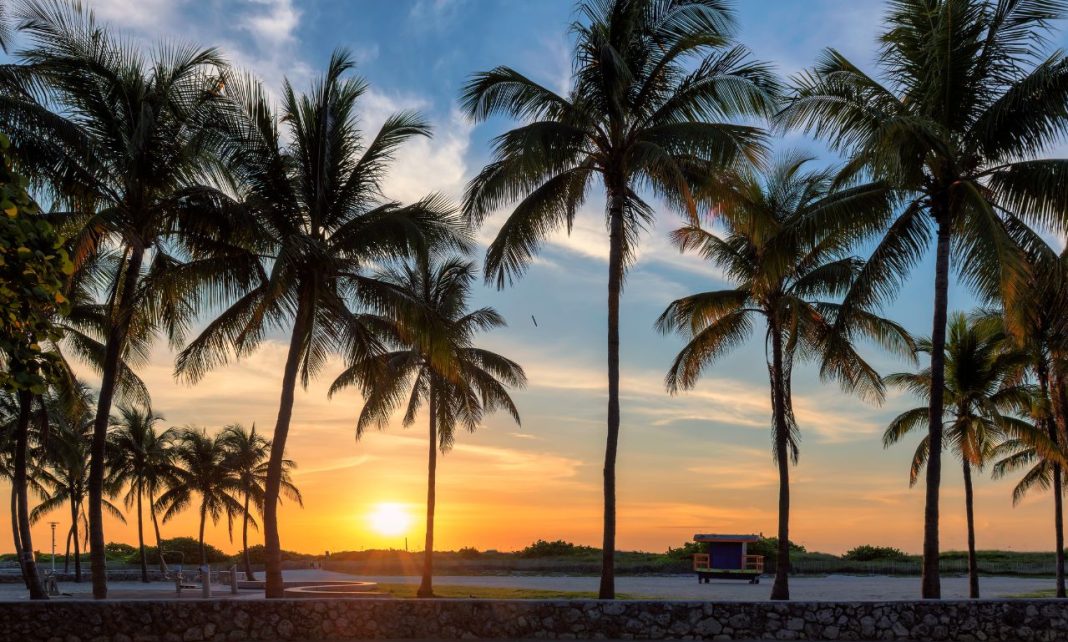Palm trees are more than just beautiful, towering figures in tropical landscapes. They carry deep symbolic meanings across cultures and have been revered for centuries. From ancient civilizations to modern times, the palm tree has come to represent a variety of concepts, including peace, victory, fertility, and spiritual connection. The distinct look of palm trees—graceful trunks, lush fronds—has made them stand out not only in nature but also in the rich tapestry of cultural and religious beliefs. Let’s explore the powerful symbolism of palm trees across different societies.
Religious Symbolism of Palm Trees
Palm branches feature in many religious traditions, most famously Christianity and Judaism. For Christians, palm branches recall the entry of Jesus into Jerusalem, where they were waved by the people as a sign of honor and celebration. The event, Palm Sunday, is among Christianity’s most significant events leading up to Easter.
For Jewish people, palm fronds (called lulav) play an essential role during Sukkot, a harvest festival. These branches become part of a ritual bundle used in prayer. I personally attended a Sukkot celebration in 2019, where the rabbi explained that the straight, upright palm branch represents the human spine – suggesting moral uprightness and spiritual alignment.
Islamic tradition also honors the date palm particularly highly. The Quran mentions palms as blessed trees, and dates are traditional foods for breaking the Ramadan fast. When I visited Morocco, a local guide told me that his grandmother considered planting a palm tree a form of spiritual insurance – its benefits would continue generating blessings long after the planter was gone.
Looking beyond Abrahamic faiths, Hindu texts refer to the palm as a symbol of fertility and abundance. In some temples, palm motifs appear alongside depictions of prosperity deities. Buddhist tradition sometimes uses palm leaves as writing materials for sacred texts, literally embedding spiritual teachings within the physical substance of the tree.
Palm Trees in Modern Symbolism

Today’s brands and organizations frequently use palm imagery to evoke specific feelings and associations. The tourism industry loves palm trees – just count how many appear in travel advertisements! These images trigger immediate associations with relaxation, escape, and luxury. One marketing executive I interviewed admitted, “Add a palm tree to almost any travel ad, and conversion rates jump measurably.”
Palm trees have become cultural shorthand for Southern California and Miami lifestyles. Movies use palm-lined streets to establish these locations instantly. You’ll spot palm trees in countless logos for businesses wanting to suggest a laid-back vibe or tropical authenticity. Companies selling everything from sunscreen to rum place palms prominently in their branding.
The fashion world cycles through palm motifs regularly. Every few seasons, palm prints surge in popularity. Designers incorporate them into everything from high-end runway collections to budget-friendly accessories. I tracked this trend for a style blog and found palm patterns spike in popularity during economic downturns – possibly as consumers seek escapist imagery during tough times.
Social media has amplified palm symbolism even further. Instagram’s ecosystem practically runs on palm tree aesthetics, with the palm emoji appearing in millions of captions and bios. Content creators recognize that palm-inclusive settings generate higher engagement. The palm has essentially become a digital symbol of an aspirational lifestyle.
Palm Trees in Middle Eastern Culture
Date palms have sustained life in this challenging environment for thousands of years. Beyond mere agricultural importance, they represent resilience and life-giving bounty. My conversations with Bedouin elders revealed that palm trees appear in countless proverbs and folk wisdom, often symbolizing endurance through harsh conditions.
In many Middle Eastern countries, palm trees feature on national emblems, currency, and official documents. Saudi Arabia’s flag and coat of arms prominently feature palm trees. The UAE has undertaken massive palm tree planting initiatives, both for practical purposes and as cultural statements. Their national identity connects intimately with these trees.
Traditional architecture incorporates palm materials extensively. During my architectural research tour of Iran, I documented homes built with palm trunks as support beams. Local craftspeople transform palm fronds into baskets, mats, and screens. People use every part of the tree – nothing goes to waste. This sustainable relationship with the palm exemplifies traditional ecological knowledge.
Middle Eastern literature frequently employs the palm as a metaphor. Poetry compares beloved women to graceful palms and men’s strength to the palm’s sturdiness. Stories describe palms as witnesses to history, standing silently through generations of human drama. One elderly storyteller told me, “The palms remember things our grandparents have forgotten.”
Palm Trees in Ancient Cultures
The palm was sacred to the ancient Egyptians and associated with rebirth and immortality. Palm branches appear in tomb paintings with afterlife gods, and archaeological discoveries show that palm motifs adorned sacred spaces. The tree’s capacity to thrive in deserts but provide sustenance perfectly complemented Egyptian concerns with death and rebirth.
In Mesopotamia, cylinder seals and carved reliefs depicted palms as sacred trees connected to fertility goddesses. Some of the oldest written references to cultivated palms come from Sumerian texts over 5,000 years old. These ancient farmers understood the palm’s life-sustaining properties and elevated them to divine status.
Greek and Roman cultures adopted palm symbolism as well. Victory celebrations featured palm branches, and athletes received palm fronds as symbols of triumph. Julius Caesar minted coins showing palm trees after his Egyptian campaigns. My research at the British Museum revealed fascinating palm tree motifs on Roman mosaics from distant provinces – showing how far this symbolism spread.
Ancient American people independently evolved their own palm symbolism. The Maya civilization had palm designs in artwork and architecture. The people of the Amazonian region used palm materials for ceremonial items. All these simultaneous developments illustrate how human beings on different continents identified something unique in these incredible trees.
Connecting With Nature
Palm trees offer accessible opportunities for nature connection, even in urban environments. Their distinctive appearance makes them easy to identify, offering beginner-friendly entry points for botanical awareness. I frequently recommend palm identification as a first step for city dwellers looking to develop nature literacy.
In many regions, public palm gardens provide contemplative spaces for reflection. The unique sound of palm fronds rustling in the breeze creates natural white noise that many find deeply calming. Studies suggest that even brief exposure to palm-dominated landscapes can reduce stress markers and improve mood.
The sustainable harvesting practices surrounding traditional palm usage offer valuable models for modern environmental approaches. Indigenous communities have managed palm resources for generations without depleting them. Their techniques demonstrate practical sustainability that industrial agriculture could learn from.
Urban landscaping increasingly incorporates native palm species to support local ecosystems while honoring cultural heritage. Cities from Miami to Melbourne use palms strategically to create microclimates and enhance public spaces. These practical applications show how symbolic appreciation can translate into tangible environmental benefits.
Unveiling the Spiritual Power of Palm Trees
Across traditions, palm trees frequently connect with concepts of spiritual alignment. Their straight trunks reaching skyward suggest a connection between earth and heaven. Spiritual directors sometimes use palm imagery when discussing prayer postures and energy alignment. Their natural form embodies the concept of grounded yet elevated consciousness.
Traditional healers worldwide utilize palm products in their practice. Palm oils are engaged in anointing ceremonies, while palm ash is engaged in purification ceremonies. As I was trained by a traditional healer in Ghana, she explained that there is a distinct part of the palm for every spiritual application – seeds for initiation, fronds for guarding, trunk for perseverance.
The palm’s seasonal cycles of growth, flowering, fruiting, and frond-shedding provide natural metaphors for spiritual development. Some spiritual teachers reference these cycles when discussing personal transformation. The palm demonstrates that growth involves both gaining new aspects and releasing old ones.
What is Special about the Palm Tree?
Palm trees exhibit remarkable flexibility in diverse habitats. Some grow in scorching deserts, and others thrive in rainy rainforests or mountains. Their specialized physiology allows them to survive under conditions lethal to most plants. Botanists I interviewed call their special vascular system instrumental to this flexibility.
Unlike most trees, palms lack the ability to heal damaged trunks. This vulnerability requires them to develop extraordinary resilience in their overall structure. Their flexible trunks can bend almost horizontally during hurricanes without breaking. This combination of vulnerability and strength makes them powerful symbols of human resilience.
Palm trees produce extraordinary abundance. A single date palm can yield up to 300 pounds of fruit annually for decades. This productivity, especially in harsh environments, explains why so many cultures associate palms with prosperity and abundance. Few plants offer such generous returns with relatively minimal care requirements.
The aesthetic impact of palms transforms landscapes dramatically. Their distinctive silhouettes create an instant atmosphere and sense of place. Landscape architects value them for their strong vertical elements and sculptural qualities. Their visual power explains why they feature so prominently in art, photography, and design across centuries.
What is the Significance of the Palm?

Palm trees hold economic significance that transcends symbolism. The palm oil industry alone employs millions globally and generates billions in revenue. Date production supports entire regional economies across the Middle East and North Africa. This economic reality has shaped cultural attitudes toward these trees for millennia.
Military history intersects with palm symbolism in fascinating ways. Roman legions awarded palm branches to victorious commanders. This practice influenced European military traditions for centuries afterward. Military insignia and medals still incorporate palm motifs to symbolize victory and achievement.
The palm’s use in national symbolism is a symbol of deep cultural affiliation. Palms appear on flags or national seals for such nations as Haiti, Maldives, Sri Lanka, and a great number of Pacific Island states. The symbol associates national identity with that of the palm – strength, fertility, and particular uniqueness.
Conclusion
Palm trees stand as living bridges between cultural worlds. Their symbolism crosses religious boundaries, spans ancient and modern contexts, and connects pragmatic functions with spiritual meanings. Few natural elements have maintained such consistent symbolic power across diverse human societies for thousands of years. The palm’s enduring appeal reflects something fundamental about human nature. We recognize in these trees qualities we aspire to embody ourselves – standing tall through difficulty, bearing fruit abundantly, and maintaining distinctive character. Their symbolism remains powerful because it speaks to universal human experiences and aspirations.
ALSO READ: The Spiritual Meaning & Symbolism of Bumblebee
FAQs
In Christianity, palm branches symbolize victory and peace, most prominently used during Palm Sunday celebrations commemorating Jesus’s entry into Jerusalem.
Many cultures consider palms sacred, including ancient Egyptian, Mesopotamian, Hindu, Islamic, and various indigenous traditions across Africa, Asia, and the Americas.
In dream interpretation, palm trees often represent victory, peace, resilience, or tropical escape, though specific meanings vary across cultural traditions.
This association began in ancient Rome, where victorious athletes and military leaders received palm branches, symbolizing their triumph and achievement.
In Buddhism, palm leaves were traditionally used as writing materials for sacred texts, creating a connection between palms and wisdom preservation.
Meta Description: Discover the rich symbolism of palm trees in different cultures, from religious significance to modern interpretations across global traditions.


